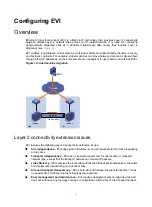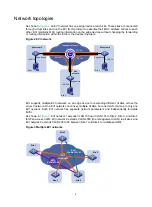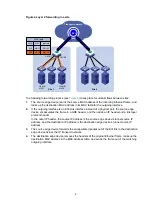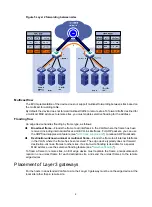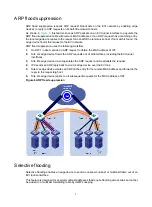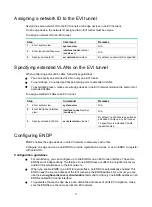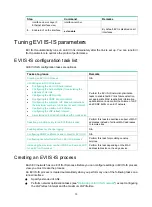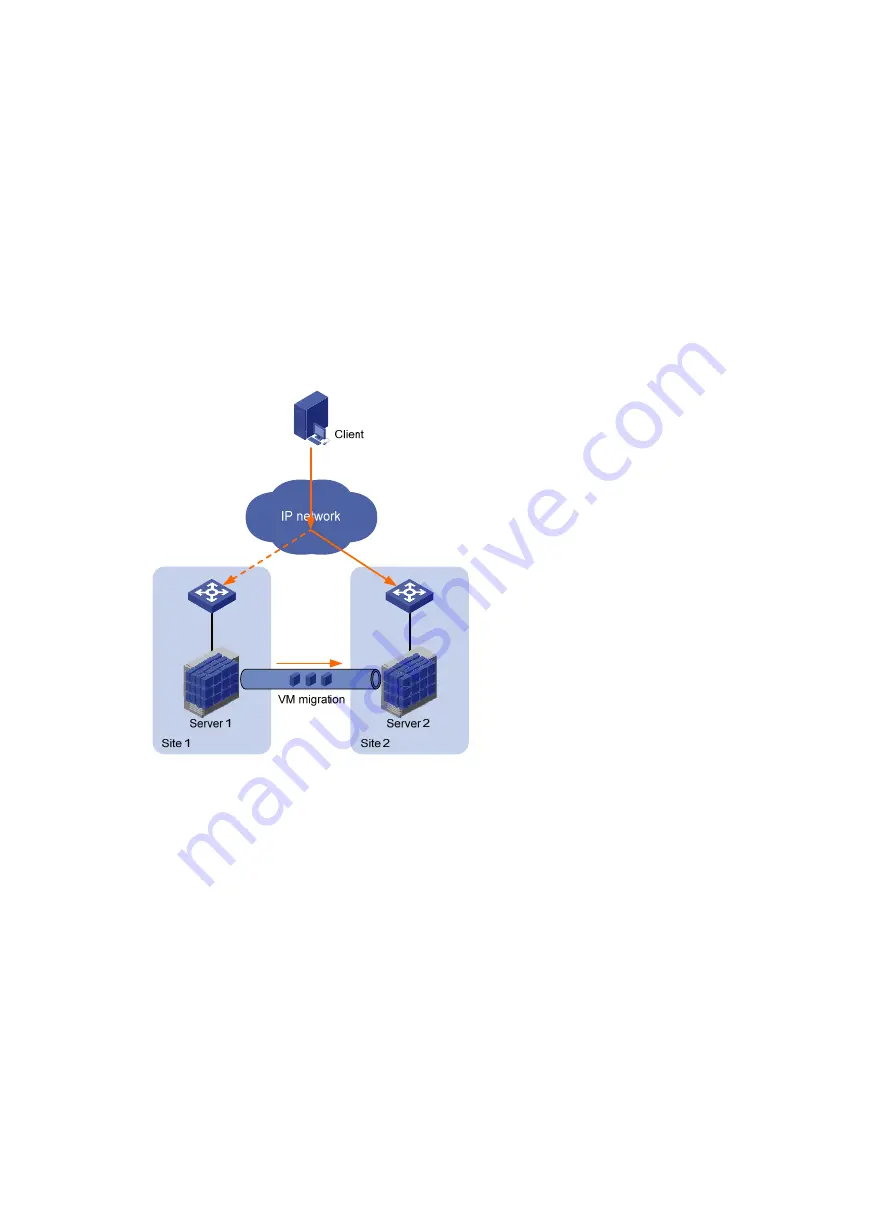
1
Configuring EVI
Overview
Ethernet Virtual Interconnect (EVI) is a MAC-in-IP technology that provides Layer 2 connectivity
between distant Layer 2 network sites across an IP routed network. It is used for connecting
geographically dispersed sites of a virtualized large-scale data center that requires Layer 2
adjacency (see
).
EVI enables long-distance virtual machine workload mobility and data mobility, disaster recovery,
and business continuity. For example, virtual machines can move between data center sites without
changing their IP addresses, so their movements are transparent to users and do not disrupt traffic.
Figure 1 Virtual machine migration
Layer 2 connectivity extension issues
EVI resolves the following Layer 2 connectivity extension issues:
•
Site
independence
—EVI keeps protocol failures, such as broadcast storms, from propagating
across sites.
•
Transport
independence
—EVI has no special requirements for site location or transport
network type, except that the transport network can forward IP packets.
•
Link
efficiency
—EVI optimizes the inter-site multicast and broadcast transmission mechanism
and implements load-sharing on redundant links.
•
Site and transport transparency
—EVI is both site and transport network transparent. It has
no special site or transport network topology requirements.
•
Easy management and maintenance
—EVI requires deployment only on edge devices and
does not introduce any topology change or configuration within sites or the transport network.







